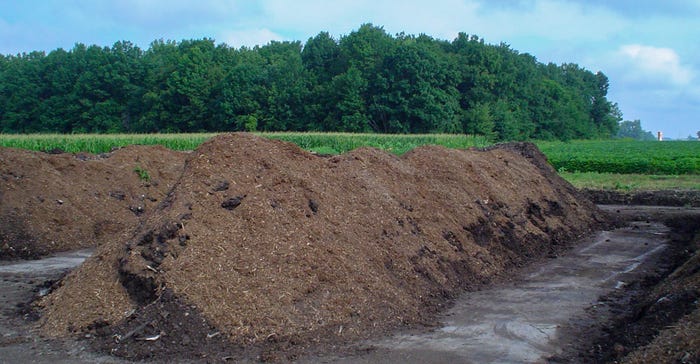September 23, 2020

Composting livestock mortalities can be an efficient and inexpensive method of disposing of on-farm mortalities. Rendering facilities are becoming harder to come by, and so are landfills that accept mortalities. Transportation costs are increasing as well. Composting offers a year-round alternative that may be more cost-effective than other disposal methods. Once the compost cycle is complete, the finished product can be land applied to the farm’s fields as a nutrient resource.
To start composting livestock mortalities, one must complete a certification course taught by Ohio State University Extension. This course teaches producers how to properly compost mortalities. It covers such topics as where to place the compost site, how large of an area is needed, how to manage a pile to compost completely and efficiently, and the economics of composting mortalities compared to other disposal methods.
In the past, the only option for certification was to attend an in-person course that usually lasted around two hours. This worked well for the initial surge of participants when it was created more than 20 years ago. But now that many individuals have become certified (more than 4,400), the training sessions are becoming more infrequent throughout the state. These courses are still available but are offered on an as-needed basis, so producers may need to wait a few months before one is offered in the state — especially in light of the COVID-19 pandemic.
Online course
Due to the sporadic demand for this course, and the challenges for doing it in-person considering the pandemic environment, OSU has created an online course, Mortality Composting, that Ohio farmers may take when they have time — and at a pace that is right for them. The same material is covered, and a short quiz is used to test participants’ understanding of the composting process.
To enroll in the online course, visit bit.ly/osumortalitycourse. The course will come up with Amanda Douridas listed as the teacher. The $17 cost may be paid online at the time of enrollment.
Once enrolled, students can begin watching the lessons. There are eight lessons that match the eight chapters in the Mortality Composting manual. The total time needed to view all eight lessons is three hours. The lessons can be viewed in one sitting or spread out over several days. Each lesson is a PowerPoint presentation, with the presenter’s voice recorded over it.
Once participants have viewed all of the lessons and feel comfortable with the material, they will be required to achieve an 80% score on the 25-question, multiple-choice quiz. Participants have three opportunities to pass the quiz. A 24-hour window between attempts allows for ample time to review the materials. Questions are randomly chosen from a bank of 70 questions, so some variation in each quiz attempt will occur. Upon passing the quiz, a certificate will be created with the participant’s name on it. This should be printed and kept for proof of successful completion.
The online mortality composting certification course is a convenient way for Ohio farmers to learn how to properly compost mortalities in an efficient, economical and sustainable way.
Douridas is the OSU Extension Educator for agriculture and natural resources in Champaign County. She is also a member of the OSU Extension Beef Team that publishes the weekly Ohio BEEF Cattle letter at beef.osu.edu.
You May Also Like




